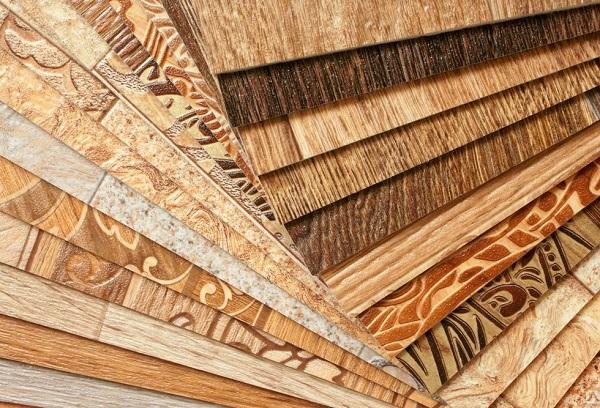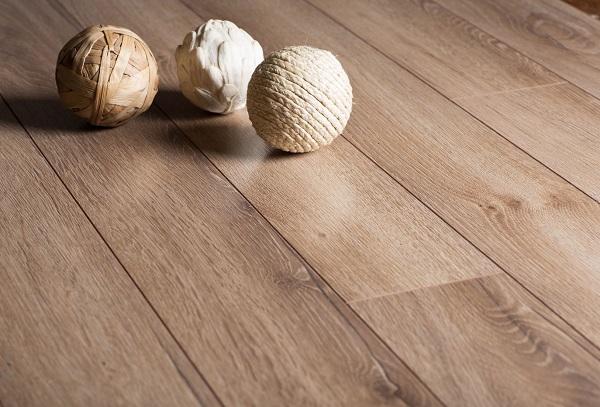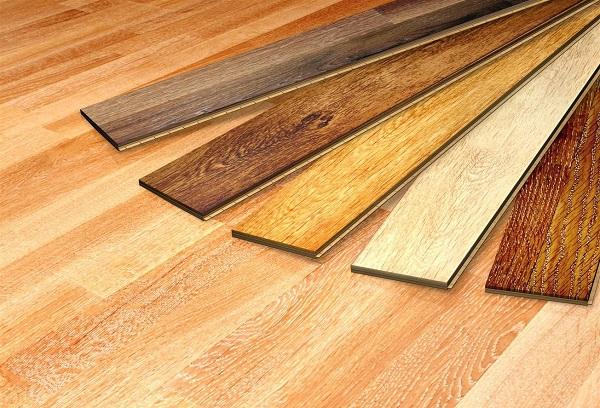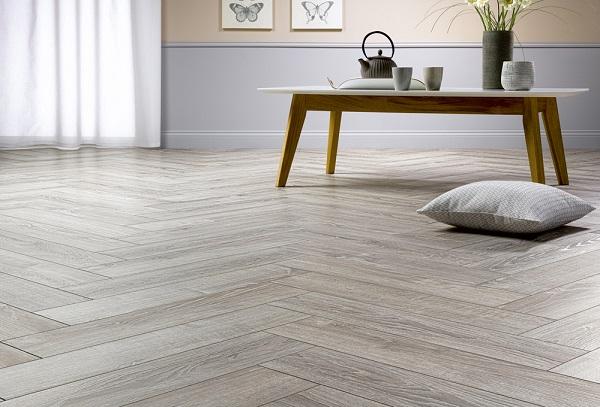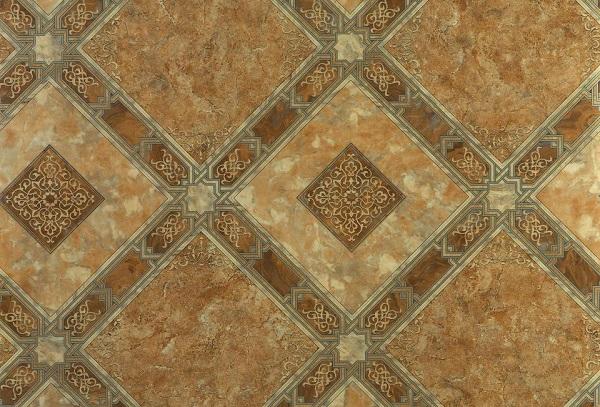Which is better for an apartment, linoleum or laminate - comparison, expert opinion
Content:
When it comes to renovations, homeowners, along with solving other problems, have to make a choice of flooring. Laminate or linoleum is most often used; the popularity of these materials is explained by their affordable price. To decide what to choose, you will need to study the characteristics of each coating, as well as its advantages and disadvantages.
What is linoleum
Linoleum has been used as a floor covering for many decades. The material has gained such popularity due to its decorative qualities, reasonable price, and easy care.
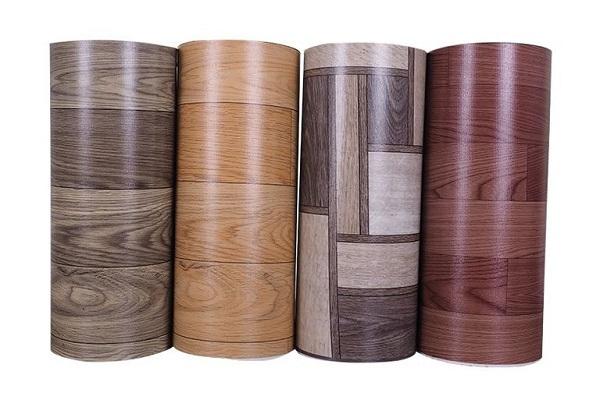
Linoleum is classified primarily according to its composition, which can be of natural or artificial origin:
- Natural. The coating composition includes linseed oil, resin, wood flour, limestone, and natural dyes. Such linoleum can be either with or without a base. Jute fibers are used as the base. The advantage of the coating is its resistance to chemicals and fats. Over time, linoleum does not fade, remaining just as bright.
- PVC. There are several types of polyvinyl chloride coating.Fabric, non-woven fabric and foam material are used as the basis for it. They also produce PVC linoleum without a base.
- Glypthal. The covering is made on a fabric basis. It is characterized by good heat and sound insulation.
- Nitrocellulose. A building material produced without a base. Its advantages include good water resistance, and its disadvantages include flammability.
- Rubber. The second name for such linoleum is relin. The top layer of the coating is a mixture of synthetic rubber and filler. The basis is crushed wood. Since during operation, relin releases toxic substances into the air, it is not used for finishing rooms.
For installation in residential premises, the first two options are most often used. Natural linoleum is chosen because of its environmental safety. The main advantage of PVC-based coating is its low price; if the linoleum loses its performance, it is simply replaced with a new one. Since polyvinyl chloride coating is most in demand, it is worth dwelling on its features in more detail.
Types of PVC linoleum
PVC linoleum can be homogeneous and heterogeneous. In the first case, the coating is a homogeneous fabric consisting of polyvinyl chloride granules and dyes. The pattern of such linoleum is located throughout the entire thickness. Thanks to this, the coating has low abrasion, and it can also be renewed by sanding. Multiple restorations are acceptable. A homogeneous coating lasts up to 25 years. It can be used in places with high traffic, for example, in the corridor.
Heterogeneous linoleum can consist of 2-6 layers and be several times thicker than a homogeneous coating.The top layer of this linoleum is reinforced with polyurethane. The layers are bonded together by fiberglass. Heterogeneous linoleum has a wide variety of colors, so everyone can choose a coating to their taste. It is better to lay PVC-based linoleum in living rooms with low traffic. Baseless material is suitable for the kitchen and hall, as it has increased wear resistance.
What is laminate
Laminate is a modern finishing material used as a finishing floor covering. The covering is a wood-fiber multilayer board. Laying the covering is made easier thanks to the interlocking connection. The material has several varieties and is divided into classes. Laminate today is produced in different styles and with different textures. Material production technology is constantly evolving.
Laminated board consists of 4 layers:
- The lowest layer plays the role of a stabilizer; it is made of paper impregnated with resins. Thanks to this base, the material becomes more rigid and not subject to deformation. The bottom layer also enhances the soundproofing properties of the laminate board.
- Then comes a fibreboard (fibreboard) or chipboard (chipboard) with a thickness of 2-4 mm. It has a load-bearing function. Wood fibers also have sound and heat insulating properties.
- The third layer plays a decorative role. It is this that gives the laminate a certain texture and color. Decor is made from plain or polymer paper, veneer, and foil. The design is applied with a special printer and then covered with a protective layer.
- The finishing layer is applied to protect the laminate board from external influences. This is usually melamine or acrylic resin. The thickness of the protective layer depends on the class of the laminate.
Varieties of laminate boards differ in terms of moisture resistance, thickness, width, strength, fire resistance, and wear resistance. There is also such a criterion as the environmental friendliness of the material. The marking indicating this indicator depends on the amount of formaldehyde in the material. There are types of laminate in which the harmful component is completely absent.
For domestic premises, coatings of 21, 22, 23 strength classes are used.
| Laminate class | Life time |
| 21st | up to 2 years |
| 22nd | 2-4 years |
| 23rd | 4-6 years |
This laminate is not designed for increased load. The safety of the floor is greatly influenced by its care. Do not allow liquid to get into the joints of the board. It is also better to clean up water or drink that is accidentally spilled on the floor immediately. Laminate class 31, 32, 33 is used mainly for finishing office premises, gyms, shops, cafes. The service life of such coating is from 10 to 20 years if used at home.
Since laminate is afraid of water, dry cleaning with a vacuum cleaner should be carried out more often to prevent severe contamination of the surface. Wet cleaning is carried out carefully, using a napkin soaked in water or a detergent solution and well wrung out.
What is the difference
Linoleum and laminate differ in the composition of the raw materials used for their production. In this regard, the price of materials and their performance characteristics will be different. Linoleum is characterized by high density, water resistance, resistance to mechanical stress and chemicals.
The coating has good sound and heat insulation properties, depending on the thickness of the material.It is difficult to make changes to the production of linoleum; over the years, this process has been improved as much as possible.
Laminate is a more modern finishing material, the production technology of which continues to change. As a result, the laminate board acquires improved characteristics. The coating is durable and strong. Externally, laminate looks like real parquet, but it is more affordable and more practical to use.
If we talk about which is more harmful, everything will depend on the class of one or the other coating. For example, natural linoleum is considered safe from an environmental point of view. That is why it costs more than analogues made from PVC. Laminate may also vary in this parameter. There is a type of coating that is completely free of formaldehyde, which is harmful to humans.
comparison table
The table clearly shows the difference in the characteristics of the materials and their advantages and disadvantages. The comparison will help those who have not yet decided what type of finishing material to purchase for the upcoming renovation or finishing of an apartment in a new building to choose a coating.
| Linoleum | Laminate | |
| Characteristics | Thickness – from 2 mm. Roll width – from 1.5 m, length – 30 m. Abrasion resistance of household class coating – AC1-AC3. Abrasion coefficient – from 900 to 2500. Impact resistance – IC1. Service life – up to 10 years. | It is made on the basis of fiberboard, chipboard, HDF boards. The load level for household grade laminate is light, medium. Wear resistance – AC1, AC2. Impact resistance – IC1. Service life up to 6 years. |
| Advantages | Versatility, high wear resistance, affordable price, moisture resistance, varied designs, softness, elasticity.The material is easy to install and requires simple maintenance. | Ease of installation, strength, durability, ability to withstand mechanical loads, varied design. |
| Flaws | Flammability, the chemical composition of PVC linoleum requires a perfectly flat base; irremovable dents from furniture may remain. | It is afraid of moisture, creaks when laid on an uneven base, accumulates electrostatic electricity, and can cause allergies. |
| Price | From 130 rub./sq. meter. | From 500 rub./sq. m |
The price of the material depends on its class and brand of manufacturer. When making a remote purchase online, you should consider the cost of delivery.
Pros and cons of linoleum
The pros and cons of linoleum depend on its composition and class. For example, natural coating is chosen for its environmental friendliness, but at the same time the material is capricious in installation; it cannot be bent too much due to the possibility of cracks.
The advantages of PVC coating include the following indicators:
- high noise absorption;
- moisture resistance;
- large selection of colors;
- UV resistance;
- wear resistance;
- low cost.
Thanks to the special coating, linoleum does not slip. Among the disadvantages of the material, its ability to ignite, shrinkage after installation, and a chemical smell during the first weeks of operation come to the fore. Heavy furniture can leave dents in the surface that cannot be removed later.
Pros and cons of laminate
Laminate is valued for its external resemblance to parquet and good performance characteristics.
The advantages of the coating include:
- interesting design;
- strength (refers to high-class material);
- ease of installation;
- resistance to mechanical stress;
- easy care;
- good heat and sound insulation;
This material also has disadvantages. The lower the class of linoleum, the more disadvantages it has. The coating is susceptible to high humidity, can creak when laid on an uneven base, releases formaldehyde, and becomes deformed under sudden temperature changes. Cheap laminate is easy to scratch and has low abrasion resistance.
What is better to choose
When choosing a coating for various areas in the house, take into account their purpose, temperature conditions, and humidity levels. Judging by the reviews on thematic forums, the ratio of materials was distributed as follows:
- Linoleum is considered a more universal covering; it can be laid in any room, be it a living room, bedroom, kitchen or corridor. It is better to use the same coating in a wooden house intended as a summer cottage, which is not heated all year round. High humidity in the room will not harm linoleum, thanks to its moisture resistance.
- In apartments where it is important for the owners to make a favorable impression on guests, laminate flooring is often used, since linoleum looks cheaper. Laminate, on the other hand, can sometimes be indistinguishable from parquet, which has always been considered an attribute of luxury.
- The pros and cons of laminate boards depend on its class. A cheap coating will last only a couple of years, after which it will lose its presentable appearance, because the protective layer of such a coating is the thinnest. Material of class 21 and 22 can be put in a children's room, bedroom, living room. Here, cheap laminate will last longer if covered with a carpet.
- It is better to cover the rooms in which residents spend most of their time with the most environmentally friendly material, and it does not matter whether it is linoleum or laminate.
- In a house with cool rooms, it is better to lay laminate boards; they are warmer. However, linoleum is also suitable if you install a “warm floor” system underneath it. Foam-based PVC coating also has excellent thermal insulation properties.
- Commercial grade linoleum (31-33) is ideal for the kitchen. It is risky to lay laminate in this area, since accidentally spilled liquid will cause the material to swell. The liquid substance will easily penetrate through the joints between the laminate boards and ruin the coating.
For wet rooms (bathroom, kitchen) a specially designed plastic laminate is suitable. It is produced in various modifications, including a coating that imitates ceramic tiles.
On a note! If you want to install regular laminate in an area with high humidity, you need to coat the joints of the boards with a special “Click Guard” sealant.
Expert recommendations
An expert’s opinion will help you finally decide on the choice of flooring. The professional recommends paying attention to the following points:
- When purchasing, you should choose only those products for which the seller provides a warranty;
- You also need to pay attention to the price; too cheap a coating should be alarming (high-quality raw materials and the use of modern equipment increase the cost of the finished product);
- the material should not emit a strong chemical odor;
- in an apartment building it is better to use a laminate board with a thickness of at least 10 mm to ensure high sound insulation, the thin coating “rattles”;
- the thickness of the highest class laminate should not be less than 12 mm (in practice, this rule is not always observed by manufacturers);
- to visually expand the space of a cramped room, it is better to choose light-colored linoleum and laminate;
- waterproof laminate differs from moisture-resistant laminate in its greater ability to resist the destructive effects of moisture;
- at the same time as choosing a covering, select baseboards and thresholds that match the color;
- You should buy linoleum in one piece; if this is not possible, the joints should be made in places where they will be less noticeable.
Considering the variety of modern finishing materials, it is impossible to say which is better, laminate or linoleum. In terms of aesthetics, both coatings today are not inferior to each other. The choice should be made based on the characteristics of the room and your preferences. High-class material has a more universal purpose, since its performance qualities are further improved by the manufacturer.
